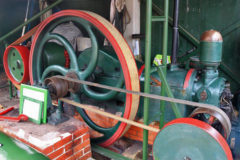Dunedin Gas Works Museum visit
Posted by Chris Graham on 1st April 2020
The Dunedin Gas Works Museum, in New Zealand’s second largest city on the South Island, is packed with fascinating machinery and information, as Phil Barnes discovers.
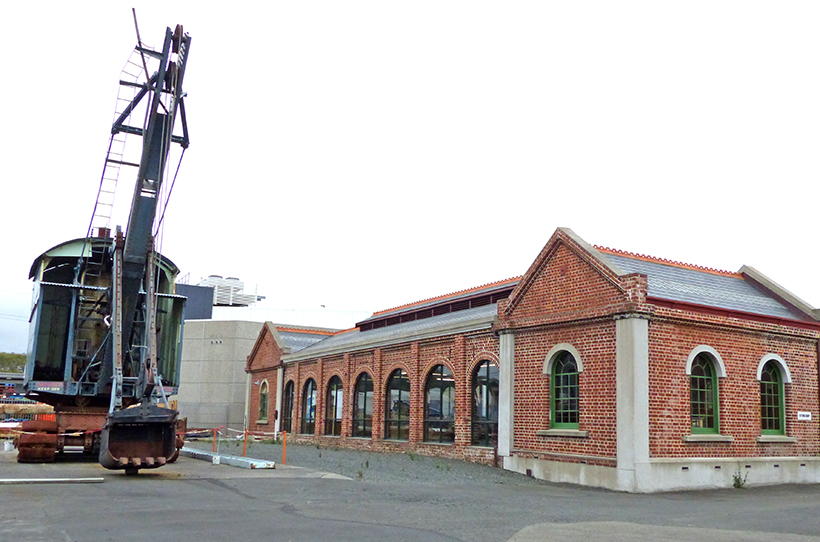
Ruston-Bucyrus No 10 Navvy and the Dunedin Gas Works Museum’s reception building, which was the Gas Works’ former fitting shop.
The story of Dunedin’s Gas Works (DGW) goes back to 1862-’63,when it was built and commissioned to supply ‘town gas’ for street lighting in George, Princes and Stuart Streets of this new and expanding town. Dunedin itself was founded in 1848, by early settlers from the Scottish Free Church, and was known as the ‘Edinburgh of the Southern Hemisphere’ – its name is derived from the Gaelic name for Scotland’s capital city.
Dunedin was the first town in New Zealand to have a gas supply. This was entirely due to leading gasworks engineer, Stephen Stamp Hutchinson, and the Dunedin Gas and Coke Co. which began supply operations in September, 1863.
Very notable site
The gas works is located in South Dunedin, between Andersons Bay Road and 20 Braemar Street, and supplied ‘town gas’ right through until 1987. It was the last of its type in New Zealand; DGW, therefore, rightly gets the accolade of being New Zealand’s first and last supplier of ‘town gas’.
‘Town gas’ (‘manufactured gas’ or ‘coal gas’) is made by heating coal in an enclosed chamber (retort) in the absence of air. Initially, the temperature is maintained at 400ºC, to soften the coal, which then coalesces and releases water vapour, tar and a rich gas (ammonia). Then the temperature is increased to about 1,000ºC, and the remaining volatile matter – in the form of hydrogen – is extracted which leaves just coke. The ‘coal gas’ consists mainly of hydrogen, methane and carbon monoxide which, today, are known as GHGs (greenhouse gases), and have been linked to global warming.
Returning to the raw state of the gas as it comes out of the retorts, it contains condensable products such as tar and ammonia, which are removed in a purification process, then stored in gas holders; a once-familiar sight in towns and cities around the world.
Rail deliveries
Initially, coal would have been brought to Dunedin by coastal shipping, and carted from the port to the gas works. But, after the purchase of the original company by Dunedin City Council in January 1876, it was proposed to run a railway into the works to bring in the coal. With the ever-developing railway system of the South Island, a siding was built off the Dunedin Peninsular and Ocean Beach Railway (aka The Matchbox Railway) into the gas works.
The connection point was about 200m south-east of the bridge which carries the South Island Main Trunk railway line over Andersons Bay Road. Although the majority of this South Dunedin rail system doesn’t exist anymore, the short, Ocean Beach Railway (New Zealand’s first preserved railway) still does, complete with its eclectic collection of railway items; true Old Glory fodder!
The gas works siding was about 200m long, and made a 90º turn into the site, which typically brought in about 15,000 tons of coal annually during the gas works’ heyday. Shunting operations tended to take place in the early morning, and were usually over by 6am; avoiding any operational conflict with the ‘rush hour’ tram service in this area. Interestingly, one rail was shared with the street tramway, which worked towards Ocean Beach, and had a gauge of 1,422mm (4ft 8in), which was different to New Zealand’s standard gauge rail system of 1,067mm (3ft 6in).
After 124 years of operation, the plant closed in June, 1987, with the siding into the works having closed the previous March (it was lifted in June, the following year). After the production of ‘coal gas’ ceased, there was a small operation to convert gas produced by a nearby landfill into LPG for local consumption, until 2000.
So much saved!
As with many plants of this type, you’d think that its lack of use would have resulted in its total destruction but, fortunately, this wasn’t the case. The Dunedin Gasworks Museum Trust was formed in 1988, and headed by Elizabeth Hinds (who was a director at the nearby Otago Settlers Museum) to preserve, display and operate as much of the old complex as possible.

The Ruston-Bucyrus Excavator serial number 1031, No 10 Navvy, near the entrance to the site.
A museum complex visit starts with the fitting shop (now the entrance/reception area), and what was once a laboratory (now laid out as a blacksmith’s shop, where training courses are run). At the Braemar Street side of the site, just outside the reception building, there’s Ruston-Bucyrus excavator No 1031, which worked in a quarry at Oamaru (now the south-eastern end of the Oamaru Steam & Rail Heritage Railway). In the south-east corner of the museum site, the gas holder legs/frame have been relocated from Kensington (about a mile away). They date from 1879, and were moved here in 2000.
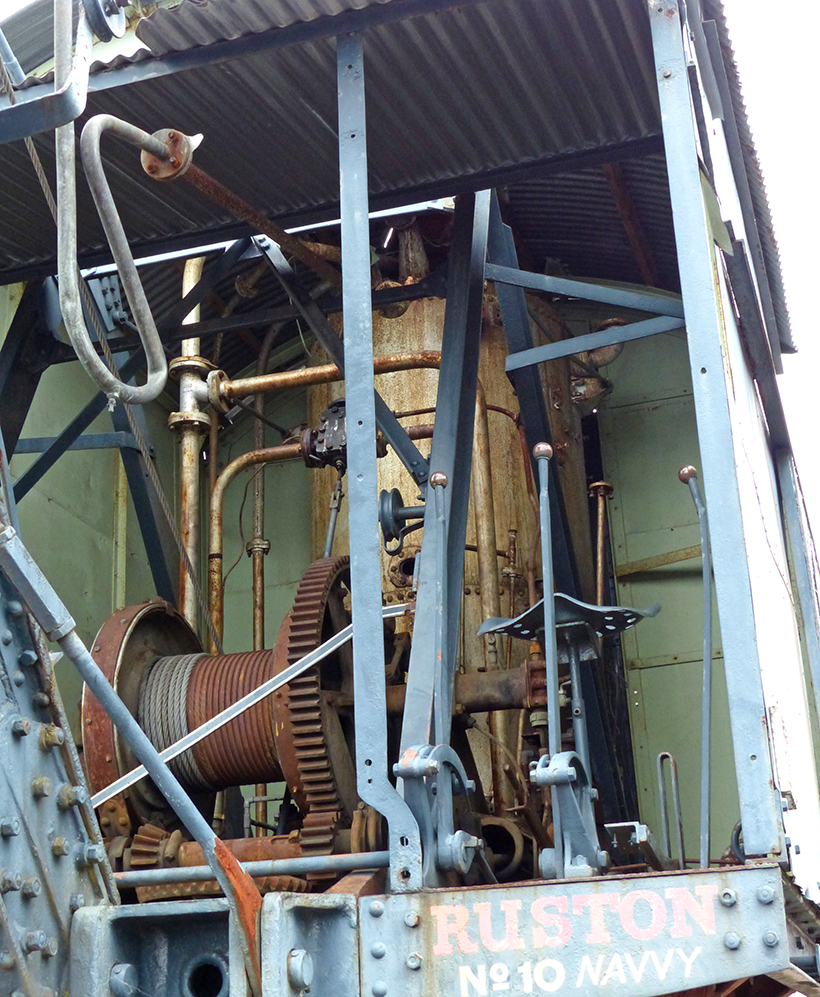
Close-up of the excavator’s boiler, winch, controls and model designation.
Moving further back into the site to the Engine Room, Boiler Room and Anderson Room, you pass the ammonia washer and de-tarrer, which was used in the gas purification process prior to storage and distribution.
Just across from the de-tarrer is the boiler room chimney (built c1881) and, next to that, are two condenser towers which were once used to cool the gas down after the various exhausters had drawn it from the retorts, where the coal was heated to make the ‘town gas’.
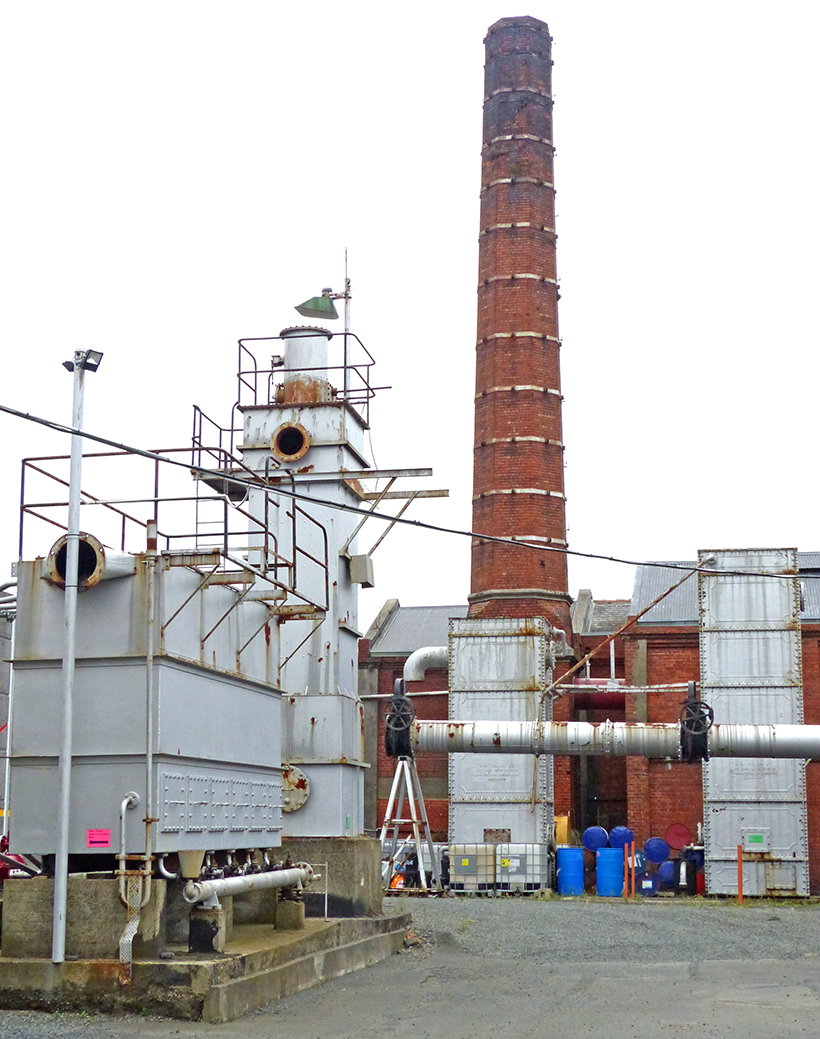
The De-tarrer and Ammonia Washer which were used in the gas purification process are on the left, with the 1881-built Boiler Room chimney and Condenser Towers behind.
Into the Engine Room area and you’ll note five, stationary steam engines of various sizes and types; all are in their original workplace and ‘unrestored’. In fact, most still sport their original paint! The largest of the five is the 1926 Bryan Donkin, two-cylinder, horizontal booster engine, which is coupled to a duplex reciprocating compressor, and was brought into use when the network’s demand was high. When demand was low, a BTH/Donkin electric booster was adequate to keep the gas holders and network adequately supplied with gas.
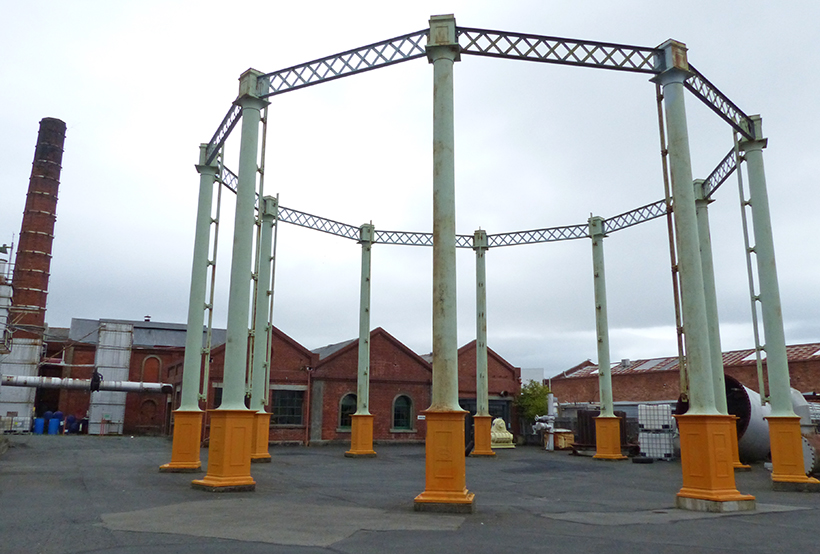
The relocated gas holder legs/frame, which once stood in nearby Kensington, and dates from 1879.
Gas pushers!
The No 1 and No 2 Waller-built Small Exhausters were used to draw gas from the retort house, push it through the de-tarrer and purifiers, then on into the gas holder. Each machine consisted of a single-cylinder horizontal engine, which drove an eccentric-vane pump. Ingeniously, the pressure in the gas main controlled the speed of engine through a governor, by regulating the steam supply.

One of the two G Waller Gas Exhausters in action; this machine was built in Stroud, England.
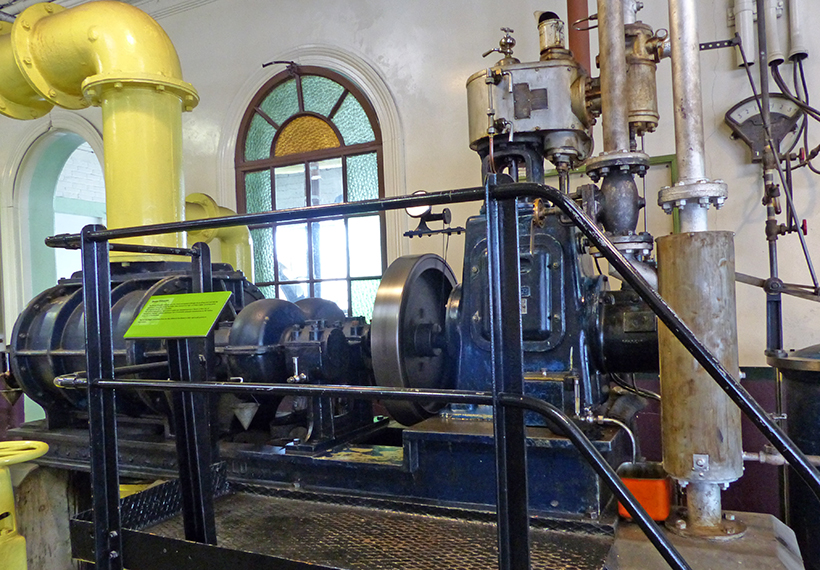
The Reader Gas Exhauster, which consists of a single-cylinder steam engine and double-gear Connersville exhauster. This machine was relocated from the West Midlands Gas Board in 1965, and is still in its colours.
All the engines driving the aforementioned devices were horizontals, but the one driving the Connersville Exhauster is a Reader, single-cylinder vertical engine which is completely enclosed, like a diesel engine. This Exhauster also drew the gas from the retorts, and also pushed it through the purifying plant and into the gas holders; this machine was mainly used in the winter, when demand was high, as it had a higher operating speed and capacity when compared to the other exhausters.
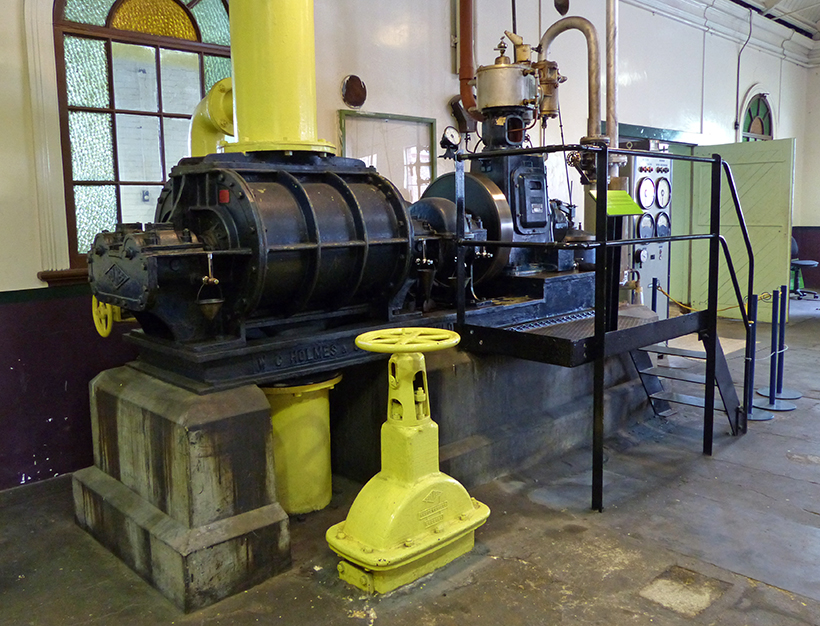
The Reader Gas Exhauster clearly showing the pump, pipework, valves and steam engine.
Tucked away in a corner of the Engine Room, there’s a small beam engine, built by the Garrison Foundry in Falkirk, Scotland. It arrived at the Gas Works in 1868 and, because of its supply certificate (still extant), is believed to be the oldest operating steam engine in New Zealand. In August, 1927, the engine was gifted to the Otago Early Settlers Museum and, ultimately, became a pile of parts, which volunteers returned to the Gas Works Museum in the 1990s, for eventual restoration to working order.

Garrison Foundry beam engine of 1868 in action in the Engine Room.

J&J Braddock of Oldham patent 2455 gas governor/regulator valve, which was one of the three originals on this site.
The Engine Room also contains a J&J Braddock-patented 2455 gas regulator valve (one of three originals), which acted in a similar way to a gas holder (ie expanding and contracting), but drove a mechanism which let more gas into the pipe network when needed. No gas supply museum would be complete without showing examples of cookers and equipment that used the end product and, to this end, there’s a room laid out as a ‘show room’ which may be not unlike the Dunedin City Council Gas Showroom and Demonstration Kitchen.
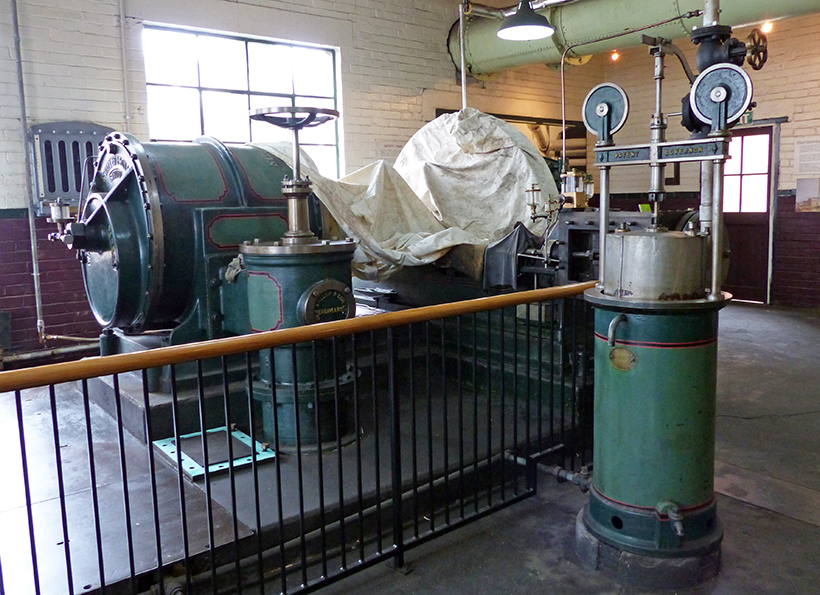
The second Waller Gas Exhauster which was not in use when I visited.
Interesting boilers
Passing through the Engine Room to the back of this area, you enter the Boiler Room, with the original, coal-fired boiler which was made by Dunedin Engineering & Steel Co Ltd, now lying idle. Next to it, you’ll find a replacement, 10hp, oil-fired Anderson boiler, which was installed through 2013 to mid-2014, making it possible to run the engines again after 15 months of down time back then.
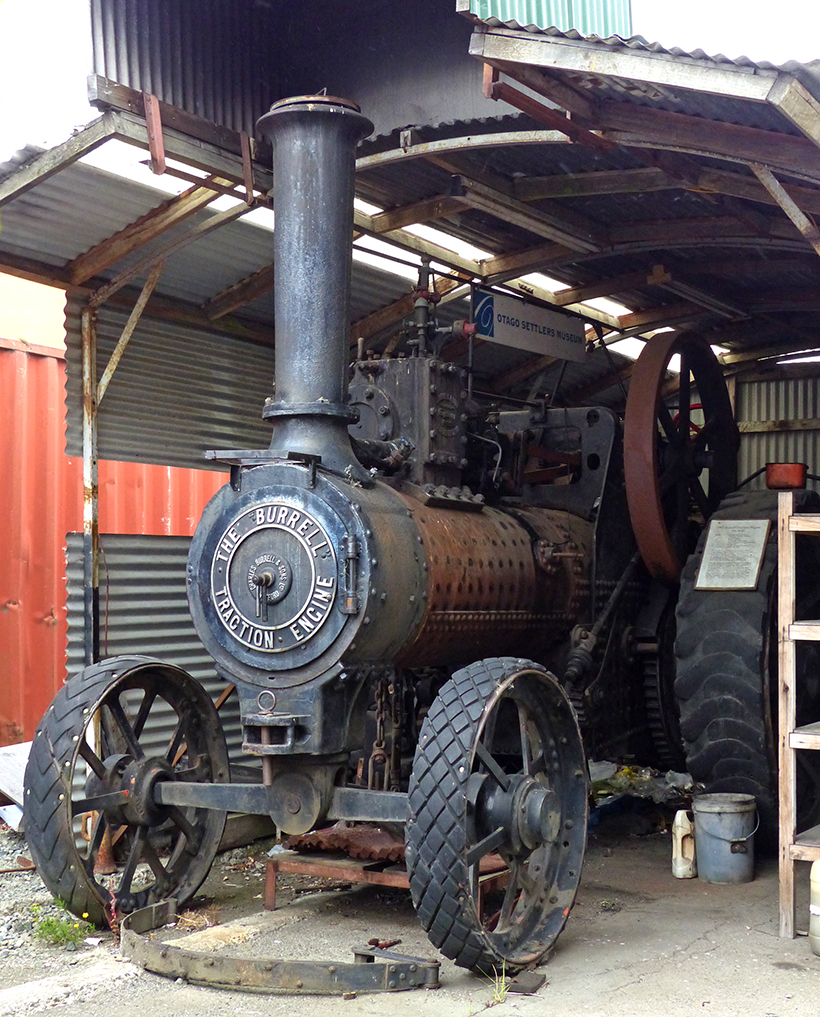
Burrell 8hp traction engine No 2632 of 1903, in its shed behind the Anderson Room.
By passing into the Anderson Room at the back of this block, another redundant (and unmarked) boiler can be found, sitting against the ornate and decorative brick work of the adjoining Boiler Room wall. Just across from the boiler is an 1890s-built Andrew’s ‘Stockport’ Gas Engine, which used to run on coal gas, but is undergoing conversion to LPG; another example of former town gas use!
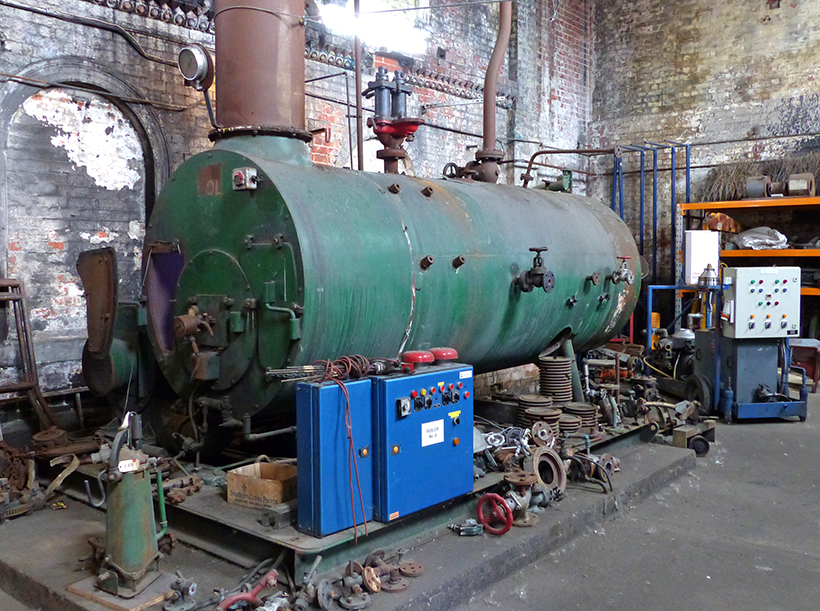
The disused boiler in the Anderson Room.
Upon retracing your steps back through the Engine Room, it’s worth taking a look at the lengthy BTH/Bryan Donkin 500vdc-powered gas pump, which is supplied by an AC-powered motor generator set located at the other end of this room.
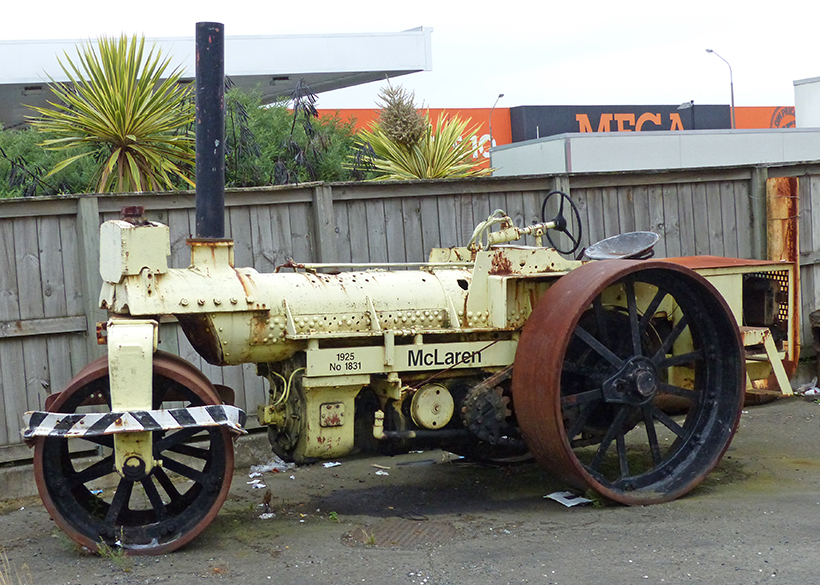
The converted (to diesel), 1925-built McLaren roller No 1831 which was found at the rear of the DGW site.
At the back of the site, towards Anderson’s Bay Road, is an engine shed complete with Burrell 8hp, 12-ton traction engine (No 2632) of 1903, that’s keeping company with a converted 1925 McLaren road roller (No 1831). Close inspection affords detailed views of the work involved in the conversion of the ‘Mac’ to diesel power.
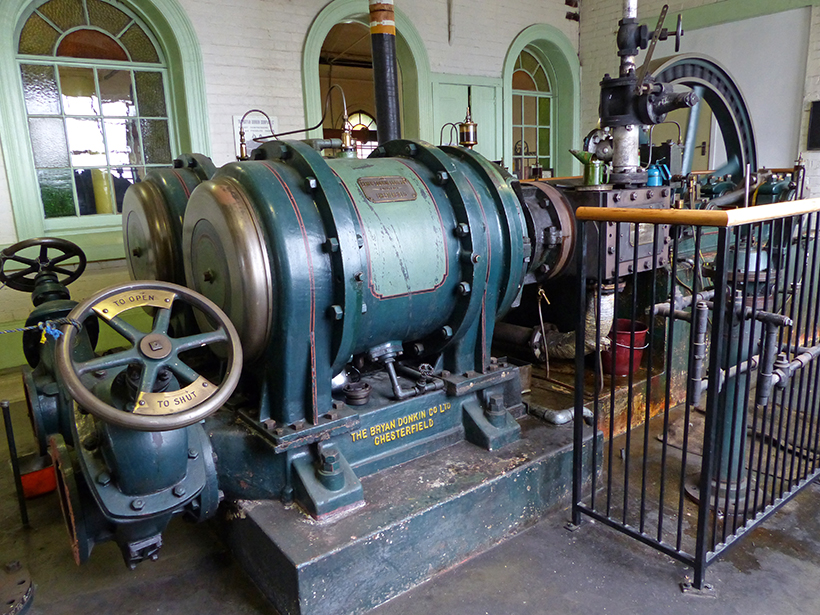
The shut-off valves and Duplex reciprocating compressor ‘end’ of the 1926-built Bryan Donkin Co Ltd engine.
Returning to railways again, one of the locos which once shunted the gas works was the 1873-built Dubs (No 648) 0-4-0T number NZRA66. This loco worked at the Gas Works from 1904 to 1949, and was one of the first to be preserved in New Zealand. A66 started its ‘life’ in preservation by being displayed outside the nearby Early Settlers Museum until 1973. It then moved to the aforementioned Ocean Beach Railway, where it stayed until 1981. After this it was displayed in a themed restaurant at the Carnavon Hotel, in Dunedin, until a fire destroyed the restaurant in 1988, damaging the loco, as well.
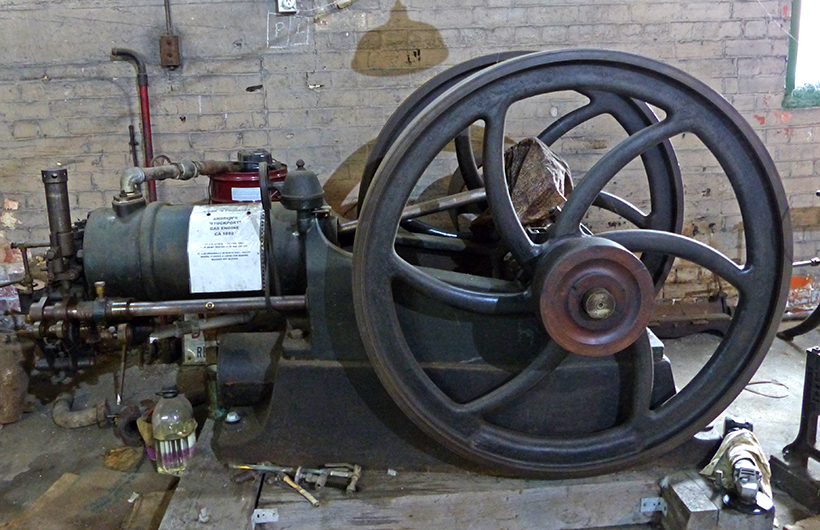
Andrew’s ‘Stockport’ Gas Engine of c1890, which used to run on coal gas, but is being restored to run on LPG.
The battle-scarred loco was then put into the care of the Strath Taieri Lions Club, and was displayed at Middlemarch station for a long time. Fast-forward to 2019, and I found this loco at the Waimea Plains railway, looking in a very forlorn state! Plans are now afoot to return it to the Gas Works (its old home) for display.
Original steam tram
It’s worth mentioning that A66 was the second loco to work at the Gas Works; the first was a steam tram named ‘Anglia’, which arrived at the site in early 1901, and was ‘traded in’ for A66 during 1904. The third loco was Ruston & Hornsby 48 DS shunter No 269596, which worked on site until 1977, when it was retired due to the unavailability of spares.

The steam-driven boiler feed pumps which are no longer used today.
As a way of summing up, the Dunedin Gas Works Museum is one of only three of its type known to exist in the world, and it’s possible that its rare status has unfortunately led to it not being that well known. Hopefully, though, this article will go some way to rectifying that sutuation. Additionally, the museum has a well-known patron from this side of the world – Sir Neil Cossons, who is a former chairman of English Heritage. It was he – along with Dr George Emerson, the then chairman of the DGW Trust) – that opened the museum in February 2001.
The museum today only occupies about one fifth of the original footprint the works occupied in its heyday. One of the main buildings to see demolition in the 1980s, was the 1907-built retort house. This, together with the demolition of other buildings, plus the move away from the manufacture and use of ‘town gas’, were the main factors that fostered the desire and drive to preserve what was left of this well-known part of Dunedin’s industrial past, before it was all too late! Thanks to the efforts made to preserve and restore this ‘significant local and World Heritage Site’, the museum was added to the IPENZ Register for New Zealand Heritage in February, 2014.
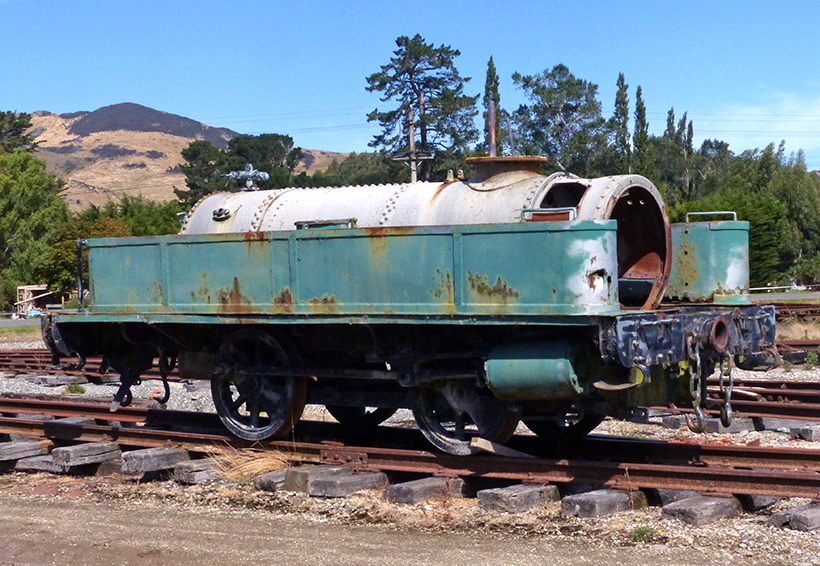
On the same trip I spotted the remains of the 1873-built Dubs loco NZR A66 at the Waimea Plains Railway, which is next to State Highway 93, a long way from Dunedin!
The museum, accessed only via Braemar Street, is open every Sunday between noon and 4pm, with the entrance charge of NZ$5. The advertising flyer describes the museum as ‘World-Class Industrial Heritage’, where visitors can see historic machinery operating. A visit it certainly enhanced by a guided tour (which helps with interpretation), and there’s even the chance to enroll on one of the on-site blacksmithing courses!
- For more information, visit: gasworksmuseum.org.nz
To subscribe to Old Glory magazine, simply click here




